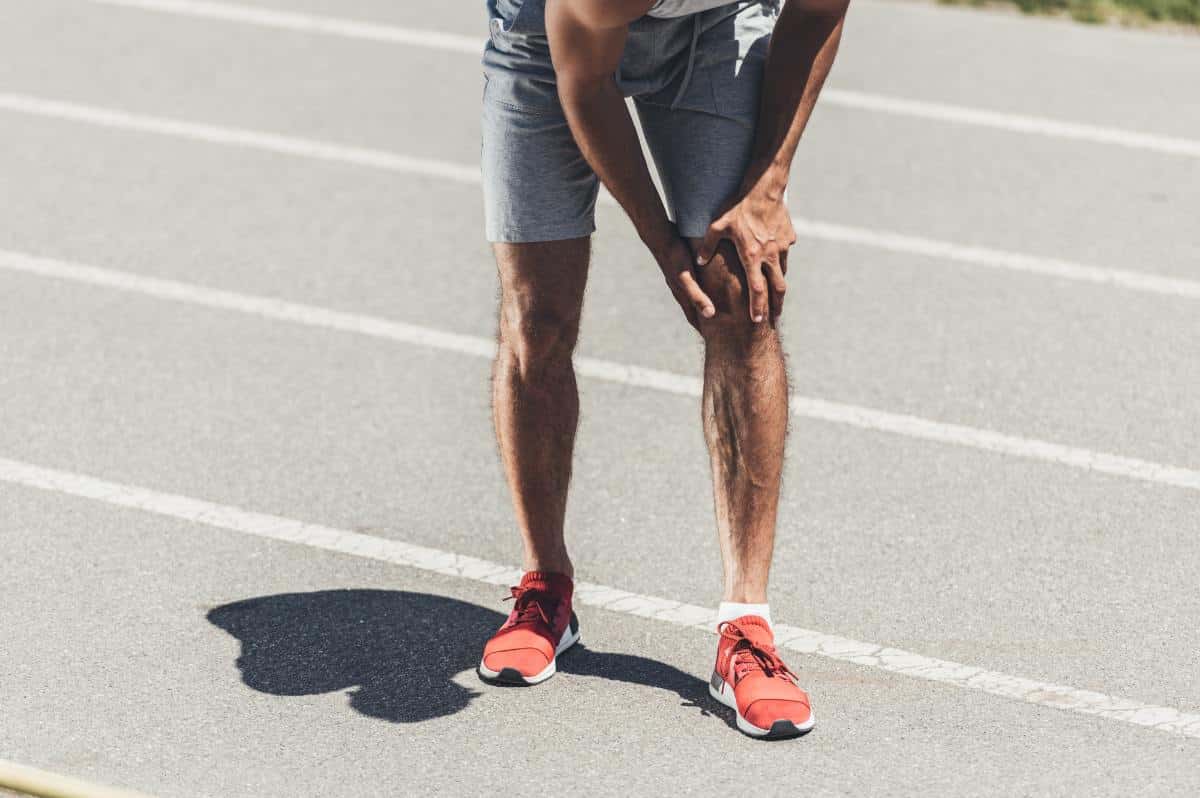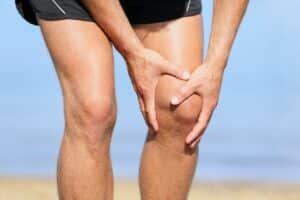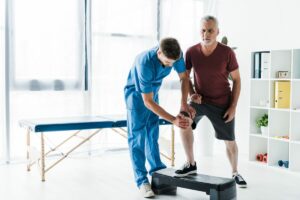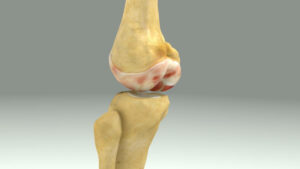Free download: Top 10 Natural & Easy Remedies for Joint Pain from Home. Learn these helpful remedies.
Inner knee pain after running can be a real bother and disrupt the flow of your running routine.
What could be causing this inner knee pain?
You might be trying to recall if you tripped over something during your run?… Maybe your running mechanics were off?…
Whatever the case may be, all you know is that your inner knee pain is becoming very annoying.
There are a lot of possible causes behind inner knee pain after running, as well as measures that can be taken to fix this.
Let’s take a look at the most common causes of inner knee pain after running and best ways to treat it.
Table of Contents
Knee Anatomy
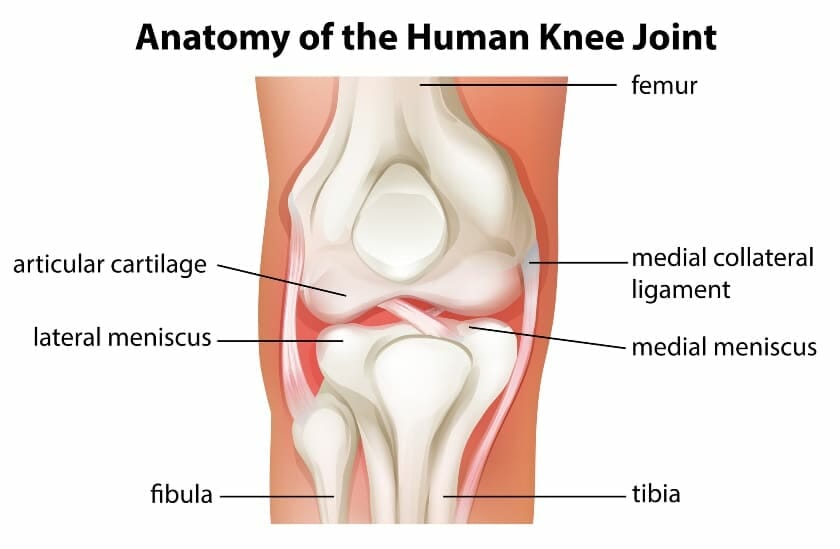
Understanding the basic anatomy of the knee will help give a better idea as to what inner, or medial knee, structures might be the cause of your pain.
The Bones
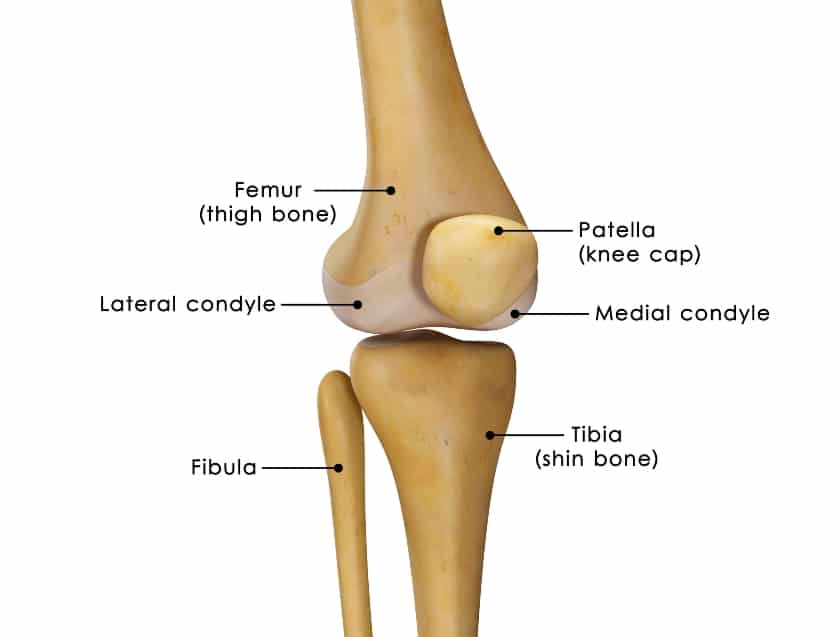
The knee consists of 3 bones that create the knee joint:
The end of the thigh bone, or femur
The top of the shin bone, or tibia
The kneecap, or patella
Soft Tissues Inside of Your Knee
There is a protective cartilage in the knee joint. This helps to provide shock absorption and cushions the bony surfaces to avoid abnormal friction forces between them.
Damage and natural wear and tear of joint cartilage is a common occurrence with knee osteoarthritis. It’s not uncommon for one side of the knee joint, such as the inner knee, to have greater wear and damage compared to the opposite side. This could potentially be a cause of inner knee pain after running.
There is another protective layer, called the synovial membrane. As the knee moves, this layer will secrete synovial fluid. This is a lubricating fluid that further helps to avoid friction between the joint surfaces, for a smooth gliding motion.
Also with osteoarthritis of the knee, it’s very common for the synovial lining to become inflamed, along with other damaging changes in the synovium. This can lead to breakdown of the cartilage in the joint, such as in the inner knee, promoting further inflammation and stiffness.
Ligaments
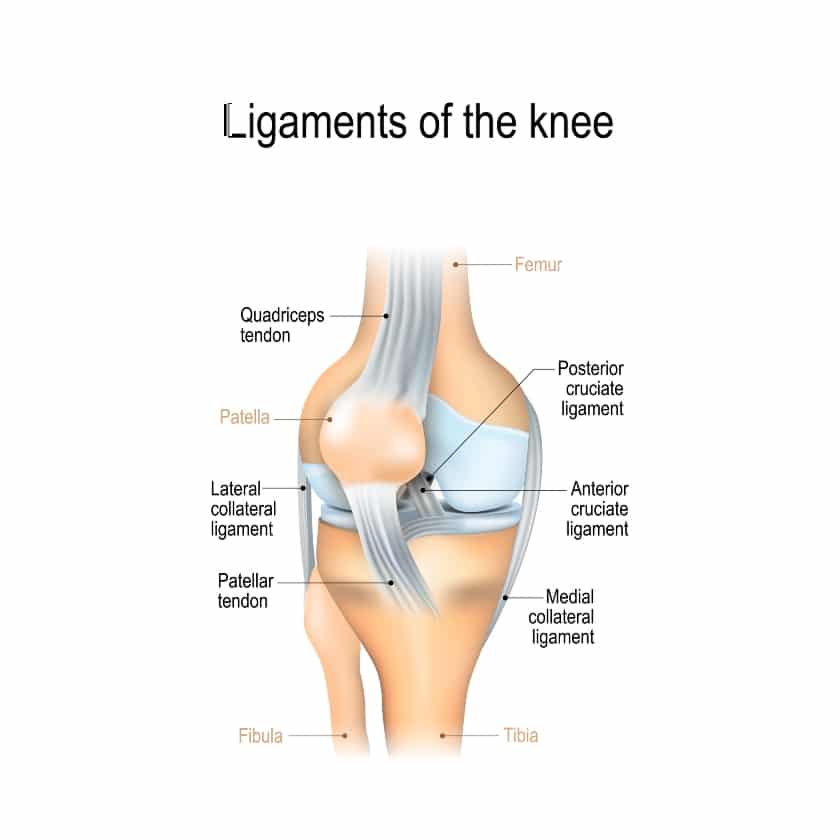
Four major ligaments surround the knee joint to provide support and stability: anterior cruciate ligament, posterior cruciate ligament, lateral collateral ligament, and medial collateral ligament.
The inner knee is supported by the medial collateral ligament, or MCL. Injury or dysfunction occurring at the site of this ligament can create inner knee pain after running.
Meniscus
We also can’t forget about the menisci in the joints. In the inner knee, this is specifically the medial meniscus.
The meniscus largely aids in shock absorption and stability of the knee. If the medial meniscus is injured or degenerated, you will not have the best support around the knee during your run, which can also lead to inner knee pain after running.
Plica
The synovial lining of the knee joint has folds in it called plica. There are 4 of these folds in the knee. They allow for better and more full movement within the joint.
The medial plica, in particular, can become problematic and cause inner knee pain after running. Those who have had previous knee injuries may be more susceptible to the medial plica becoming more thick and hardened.
When this occurs, it can rub or get caught over its attachment on the medial femoral condyle.
Pes Anserine
Another important inner, or medial knee, structure to make note of is the pes anserine. The pes anserine is the connection of 3 tendons to the inside of the knee at the shin bone, or tibia. These tendons belong to the following muscles:
Sartorius
Gracilis
Semitendinosis
Injury or overuse in the area of these 3 tendons can absolutely create inner knee pain after running, especially with the repetitive knee motion that occurs during a run.
Possible Causes of Inner Knee Pain
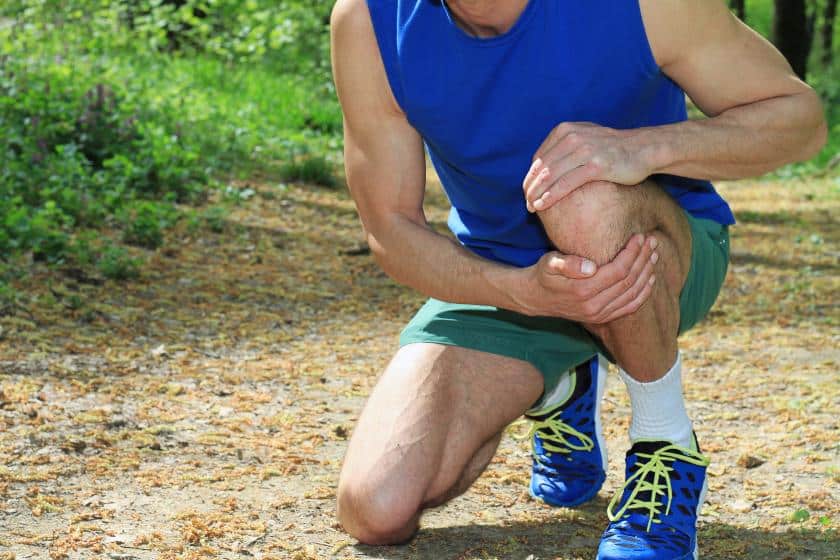
As you can see, there are a lot of inner knee structures that could be the culprit behind inside knee pain after running. Now, it’s time to look further into what the options are!
Medial Collateral Ligament Injury
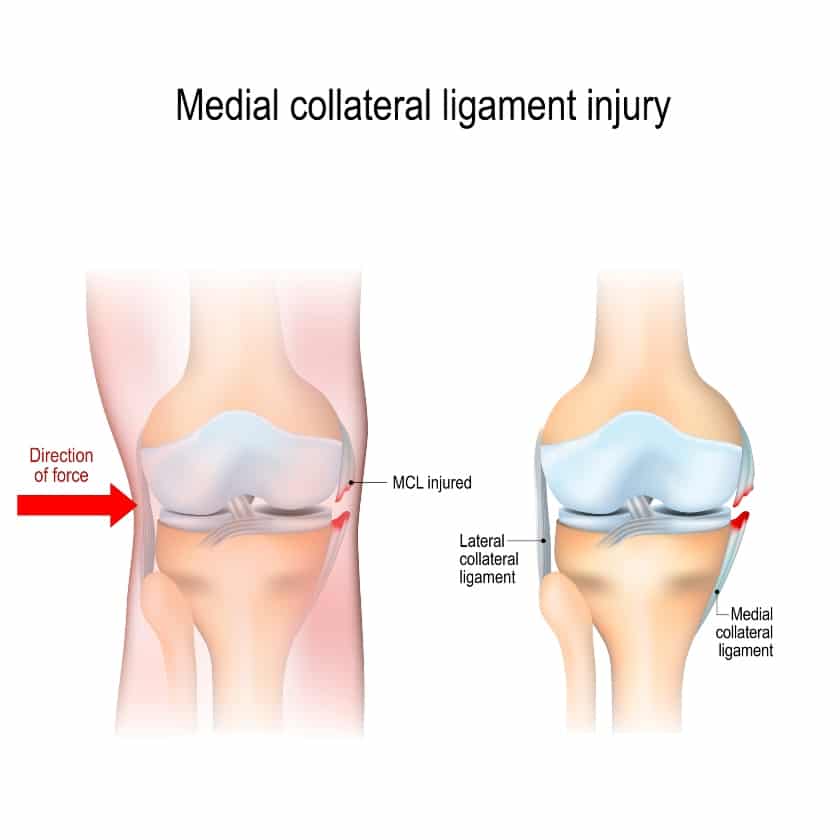
A medial collateral ligament knee injury commonly occur from contact sports injury; however, it also can occur if the ligament continuous to experience repetitive stress, such as with running.
There are 3 possible grades of an MCL injury:
Grade I: This is considered a mild MCL sprain. There are usually few mobility limitations with this grade of injury and the stability of the knee is normally intact.You may notice mild pain, swelling and/or tenderness on the inner knee.
Grade II: This MCL injury is considered a partial tear and can begin to cause instability of the inner knee and medial knee pain. You may notice more severe inner knee pain with this grade of injury, as well as medial knee swelling, tenderness and pain. Range of motion and strength may become limited.
Grade III: This is a complete ligament tear. The knee will feel very unstable. You will likely notice severe pain on the inside of the knee, swelling, limited range of motion, decreased strength, and difficulty with basic activities (e.g., walking, climbing stairs, squatting). With this severity of injury, sometimes other knee ligaments may also be involved and injured, such as the anterior cruciate ligament.
Medial Meniscus Injury
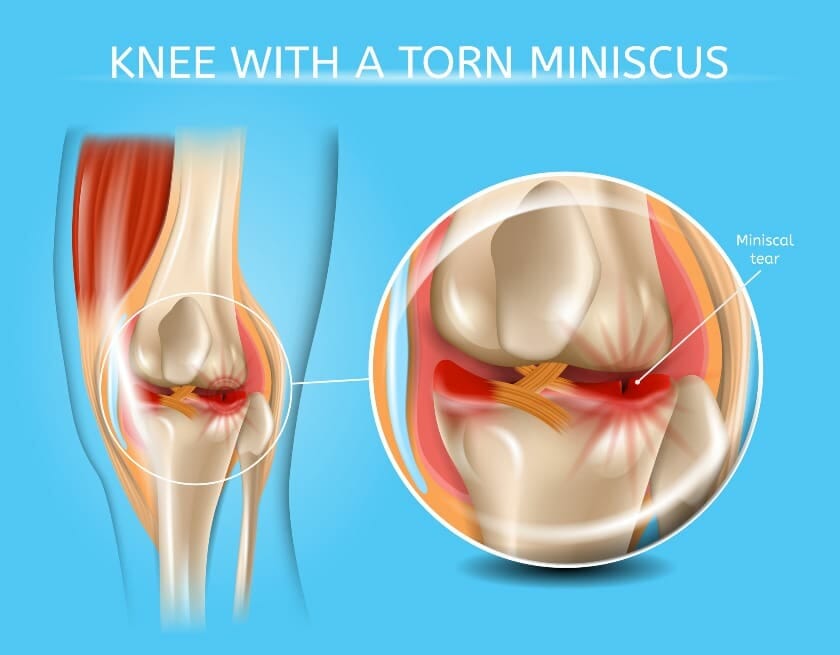
A medial meniscus knee injury usually involves a medial meniscus tear. This meniscus tear commonly occurs when the knee twists while the foot remains flat and planted on the ground.
This area of the knee can also become worn down and degenerate over time due to arthritic changes in the knee.
Usually medial knee pain from a torn meniscus will cause the following:
Inner knee pain (may be sharp pain)
Medial knee clicking or popping
Rapid swelling
Decreased knee range of motion
Knee stiffness
Difficulty walking, standing, using stairs and squatting
Inner Knee Osteoarthritis
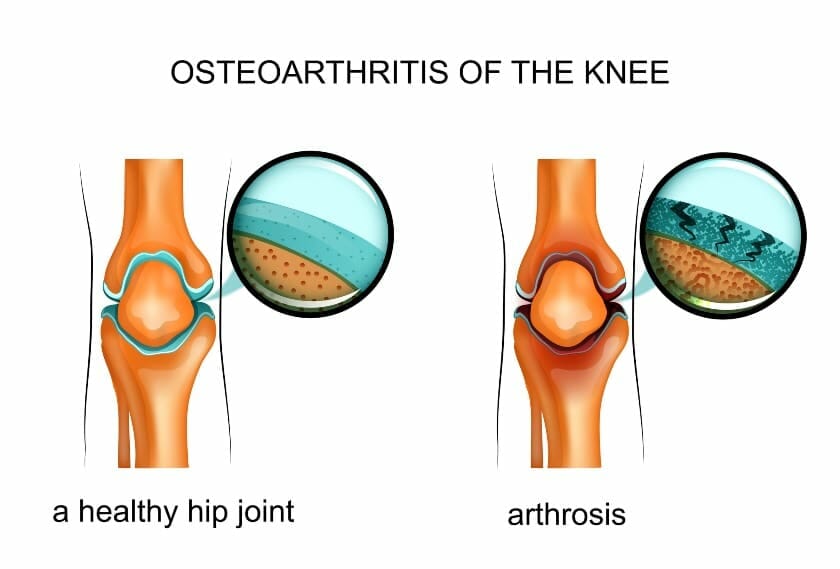
Knee osteoarthritis (OA) is a degenerative disease that commonly occurs in the knee joint as we age.
Knee OA usually occurs from wearing down of the cartilage in the knee over time. As this occurs, there will be greater friction forces in the knee joint, subsequently causing knee pain.
If the medial portion of the joint experiences the majority of the cartilage break down and friction forces, this will typically cause pain on the inside of your knee.
In addition to inner knee pain, you will also likely notice the following:
Knee stiffness, especially in the mornings or when getting up after having sat for a while
Swelling
Decreased knee motion and strength
Greater pain the more you bend the knee
Aching with possible sharp twinges of pain if you twist the knee
Medial Plica Syndrome
When the medial plica becomes inflamed, you can develop medial plica syndrome.
This is one of the possible causes of inner knee pain after running. It can lead to knee swelling, pain, and a sensation of instability in the knee.
With this sensation of instability, you will likely feel cautious with your knee movement. As a result, you may avoid standing or walking for too long.
Unfortunately, a lack of regular use of the knee joint can create further weakness of the knee muscles and reduced knee mobility.
Pes Anserine Bursitis
There is a small fluid filled sac, called a bursa, located between the tibia, or shinbone, and the pes anserine tendons.
While the bursa is meant to assist in reducing friction forces at the medial knee, if it becomes inflamed or irritated, this can become a cause of pain in the inner side of the knee.
If the bursa is irritated, it will create too much fluid, resulting in swelling and inflammation. This tends to put pressure on the inside of your knee, leading to pes anserine bursitis.
Repetitive activities, such as running, can further aggravate this inner knee pain. You’ll notice inner knee pain, swelling and tenderness.
Treatment of Inner Knee Pain After Running
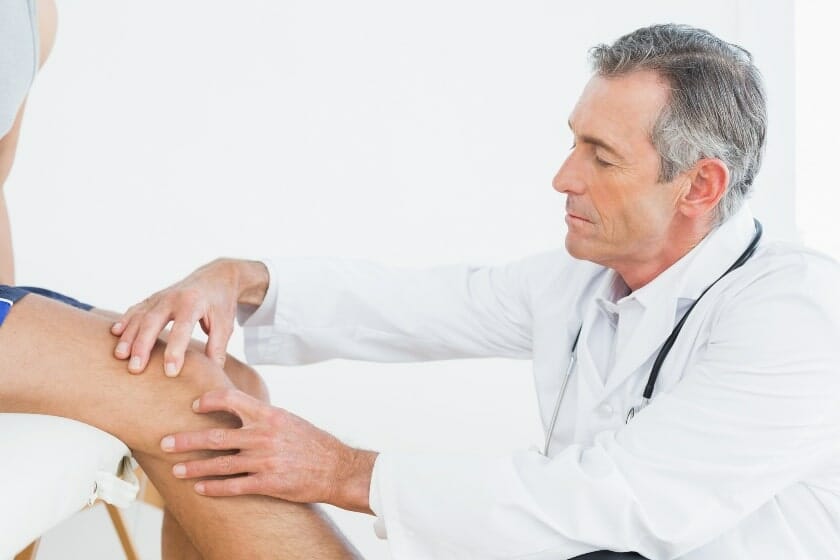
Now that we have a better idea as to what can cause inner knee pain, let’s explore possible knee pain treatments. How do you treat inner knee pain that occurs after running?
Acute Injury

When you experience knee pain suddenly, it’s important to avoid activities that exacerbate your pain and symptoms.
If your initial injury was related to a specific trauma, such as a fall or sports injury, it’s best to consult with a medical doctor immediately. They will likely perform tests and imaging to determine what your exact knee injury is.
The results of this medical examination will determine if you can be treated conservatively, such as with rest and physical therapy, or if you will need surgery.
If your knee pain can’t be traced to a specific cause, but gradually has developed and worsened, it’s best to allow the knee to rest.
Consider the R.I.C.E. method during this phase of the healing process. Allow the knee to rest, ice frequently, compress such as with an ACE wrap or knee brace, and elevate.
Chronic Injury
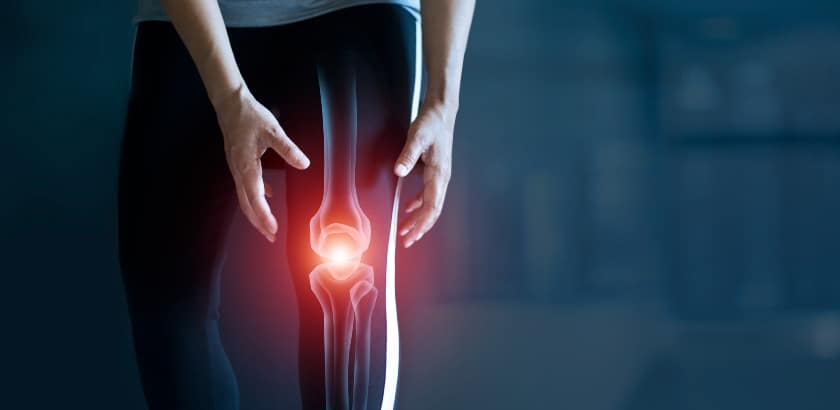
If your inner knee pain is lasting longer than 3 months, then it’s turned into an ongoing, or chronic, problem.
Maybe you tried initially resting and activity modification, but it still hurts. Because of how long it’s been going on, you decide to try to keep running… but the pain continues.
Don’t ignore it!
Even in this phase of injury, if your symptoms are still persisting, you need to consult with your medical doctor to determine the cause of your pain.
Similar to the acute phase, if your case is not severe enough to warrant surgery, you will likely be referred to physical therapy.
Physical Therapy
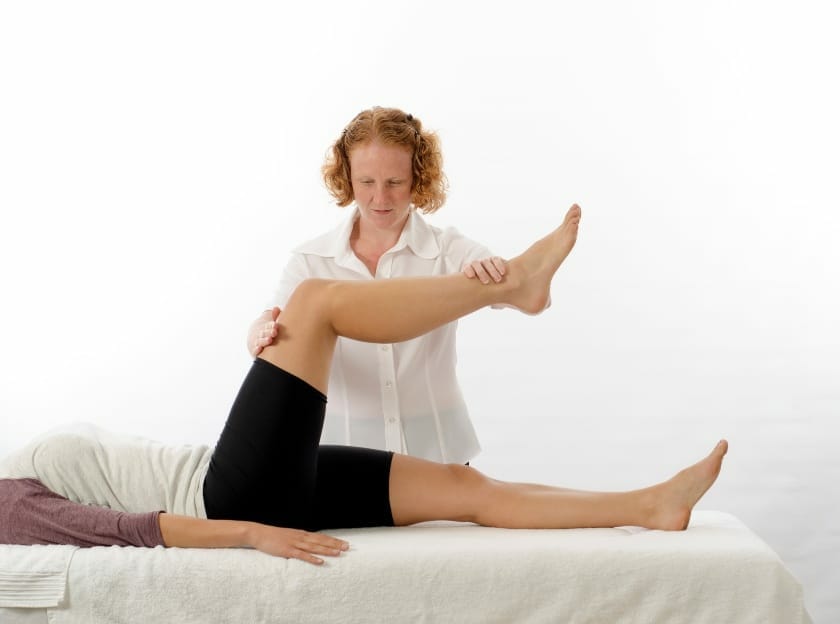
Your physical therapist will determine what your exact painful limitations are and the best methods to treat them.
This will include an appropriate exercise regimen, and possible use of manual therapy, taping, and other modalities for pain relief.
The goal of the therapy is to reduce pain and promote knee stability, so that you can get back to what you love doing… running!
Best Exercise for Inner Knee Pain after Running
The exercises prescribed will depend on what is found during the evaluation. It’s not uncommon for muscle imbalances to be present at or around the painful knee joint.
Whether or not these imbalances are the cause or a result of your inner knee pain after running can be difficult to determine at times. Regardless, they still need to be addressed.
While the exact exercises performed will depend on each individual’s clinical presentation, let’s take a look at a series of exercises focused on strengthening the leg muscles around the inner side of the knee.
These exercises will begin with the most basic, and gradually progress in level of difficulty.
1. Seated Adduction Squeeze
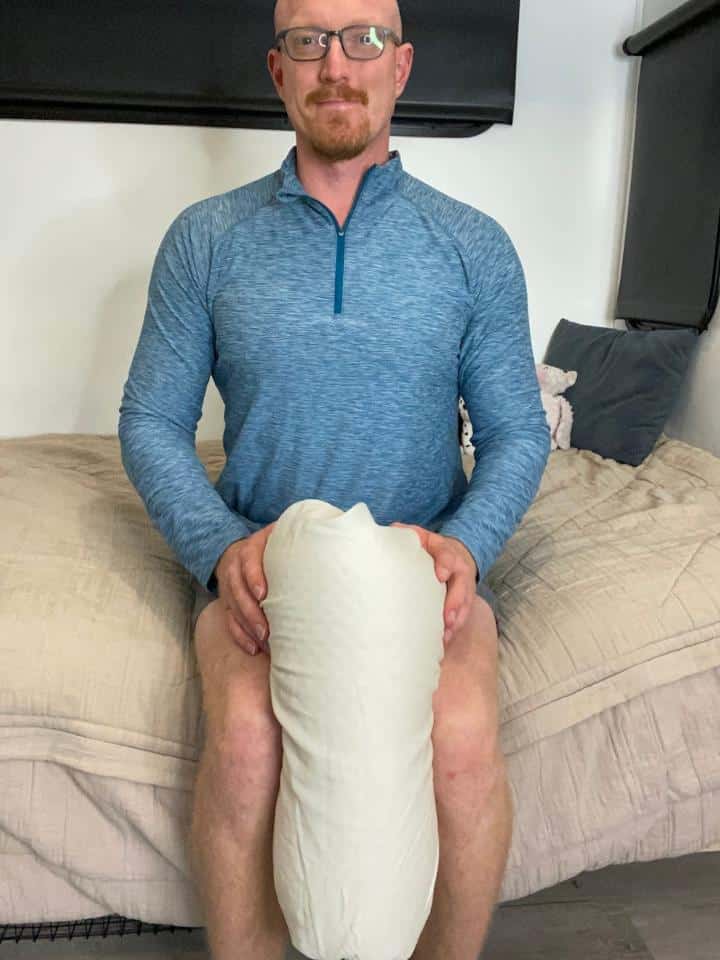
Begin seated in a chair. Place either a ball or a folded pillow between the knees.
Gently squeeze the object with the knees, holding the squeeze for 5 seconds, then relax.
Repeat 10-15 repetitions for 2-3 sets.
2. Sidelying Hip Adduction
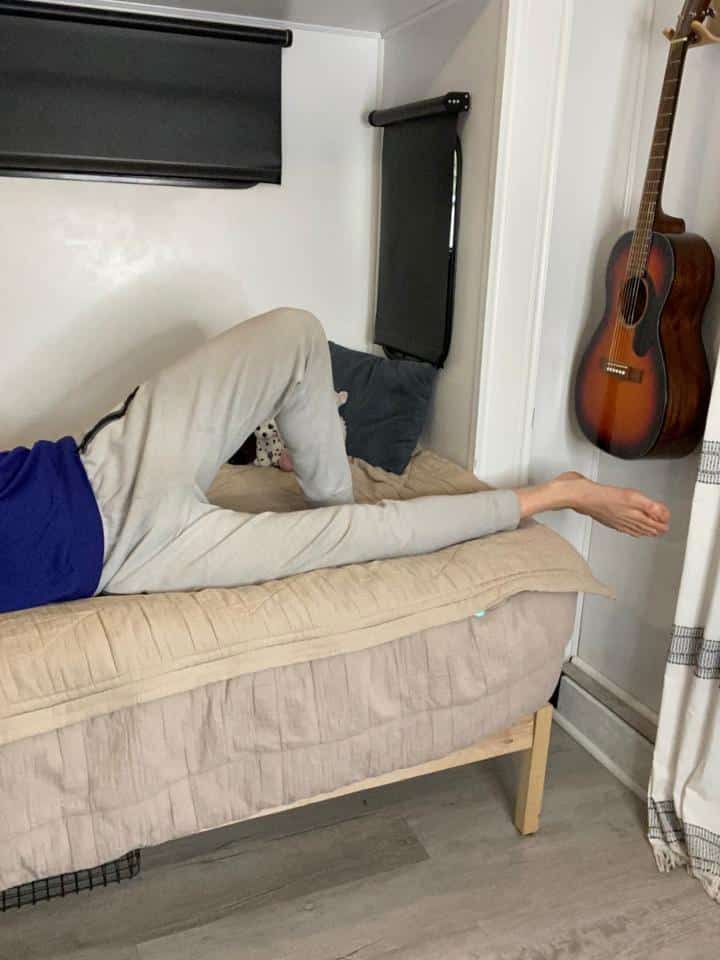
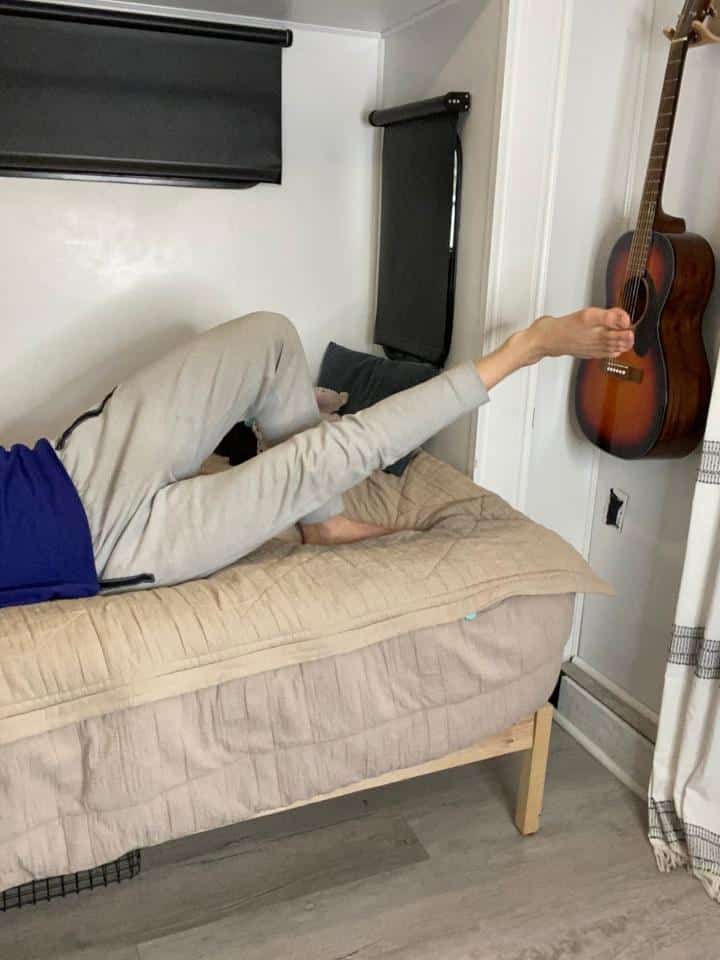
You will be laying on your side (can be on your floor, bed or couch).
Lay on the same side as the knee you’re trying to strengthen.
Position the top leg behind the bottom leg, so that you have the knee bent and foot flat on the surface you’re on.
The bottom leg will remain in front. Make sure to activate the quadriceps muscles to keep the knee straight and supported.
Slowly lift the forward leg up off the surface about 3-4 inches, then lower back down.
Repeat for 10-15 repetitions for 2-3 sets.
3. Standing Hip Adduction
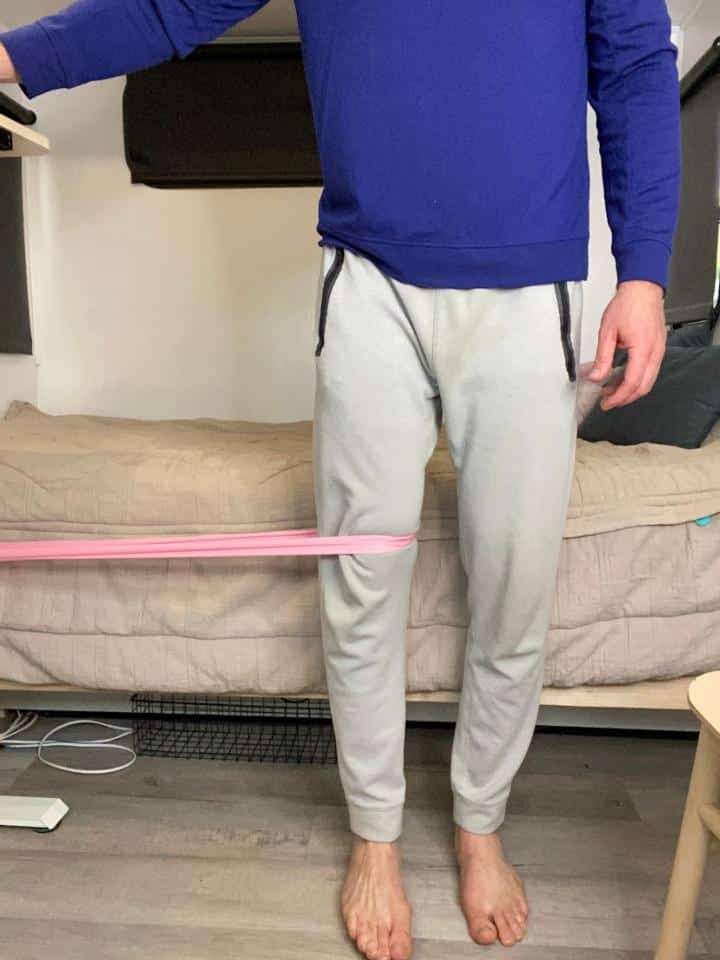
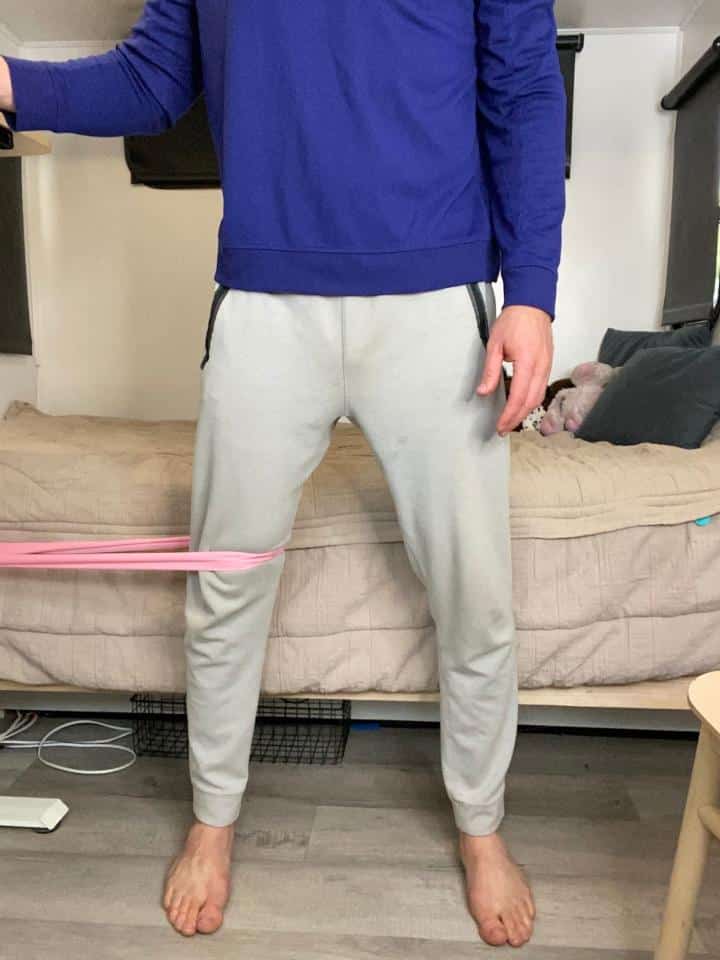
Tie a resistance band (light, medium, or heavy resistance) around a stable object, such as a table leg.
Place the painful leg inside of this loop, standing so that the working leg is closes to the attachment point of the band.
Step away so that you have a bit of tension on the band.
Keeping the working knee straight, pull the leg in towards the opposite leg, then release back to where you started.
Repeat this inward pull 10-15 repetitions for 2-3 sets.
Take a look at this video, which demonstrates the above exercise progression.
If part of the causes of inner knee pain for you is tightness on the inside of the thigh, then stretching this area will be beneficial.
4. Butterfly stretch
This is a very basic stretch that targets tight hips and tight inner thigh muscles.
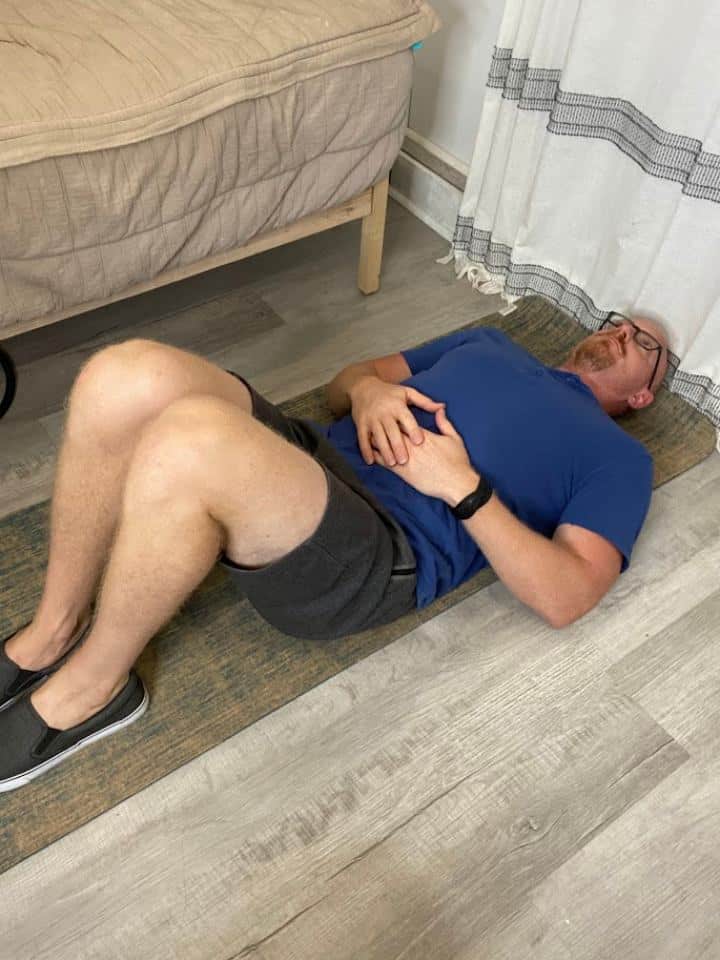
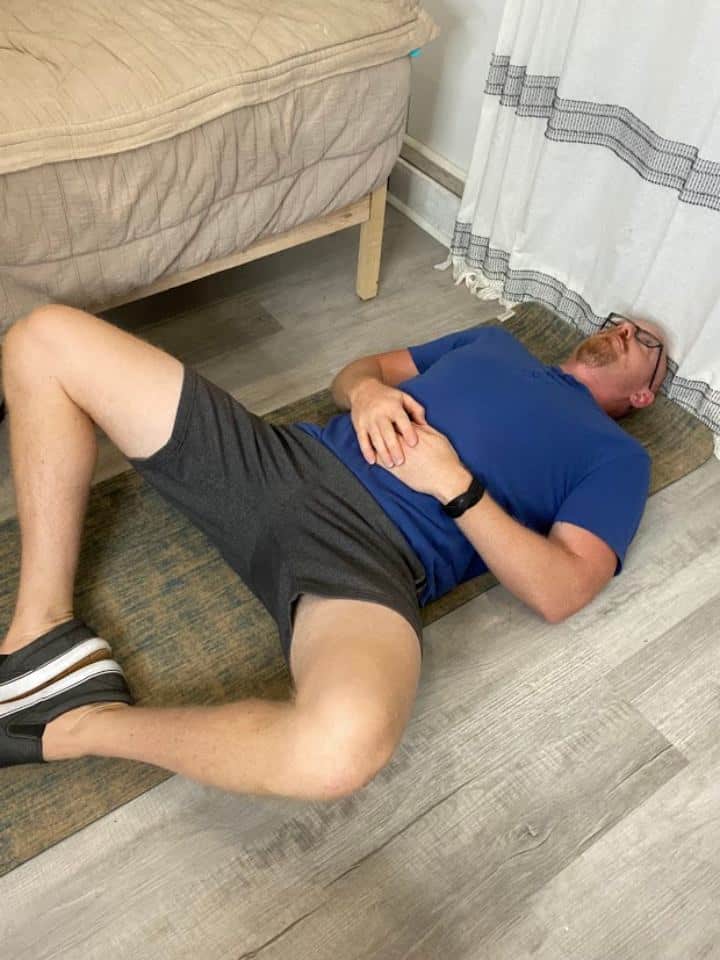
Begin on your back with the knees bent and feet flat on the surface (can lay on your bed, couch, or floor). The feet and knees should be together.
Slowly allow the knees to open apart from each other. Allow the thighs to move towards the floor as far as the hips will allow.
Make sure to avoid arching in the low back.
Try to hold the stretch anywhere from 30-60 seconds.
If the above stretch becomes a little too easy, see the video below for an alternative position. You may find this to be a little more intense, but more of a productive stretch.
Taping is commonly used while in therapy, and may be taught for home use, to provide support and stability around the knee while recovering.
Application of tape around the inside of the knee for your run can help reduce inner knee pain after running.
Check out this video demonstration of the easiest way to self-tape the inner knee.
Is it Okay to Run with Knee Pain?

While we’ve taken a look at the possible causes and treatment options for inner knee pain after running, here’s another important question… Is it okay to run with knee pain?
If your knee is constantly hurting during your run, don’t try to push through it. You could be causing more harm than good.
If you’ve developed sudden, intense pain during or after running, then don’t keep running. Have your knee checked out by an appropriate medical professional.
If you’ve been working with a rehab specialist, and you’re in the phase of returning to your sport of running, your therapist will give you guidelines to gradually progress your running tolerance.
This protocol will be geared towards slowly getting you back to your previous activity level, without causing pain.
Remember, slow and steady wins the race!
FAQ:
Who can I see about my inner knee pain?
An orthopedic specialist, who specializes in knee injuries, is the best to initially examine you. They will likely refer you to a physical therapist at some point to rehab your knee.
Should I wear a knee brace while I’m running?
A knee brace can be a good option to help support your knee while running. While it’s not a long-term solution, it can help give more support to the knee as you get back into running.
Can I still go to the gym with my knee pain?
Sure! The most important thing is don’t do anything that makes your pain worse. An orthopedist and physical therapist can help give recommendations for things to avoid in the gym while recovering.


